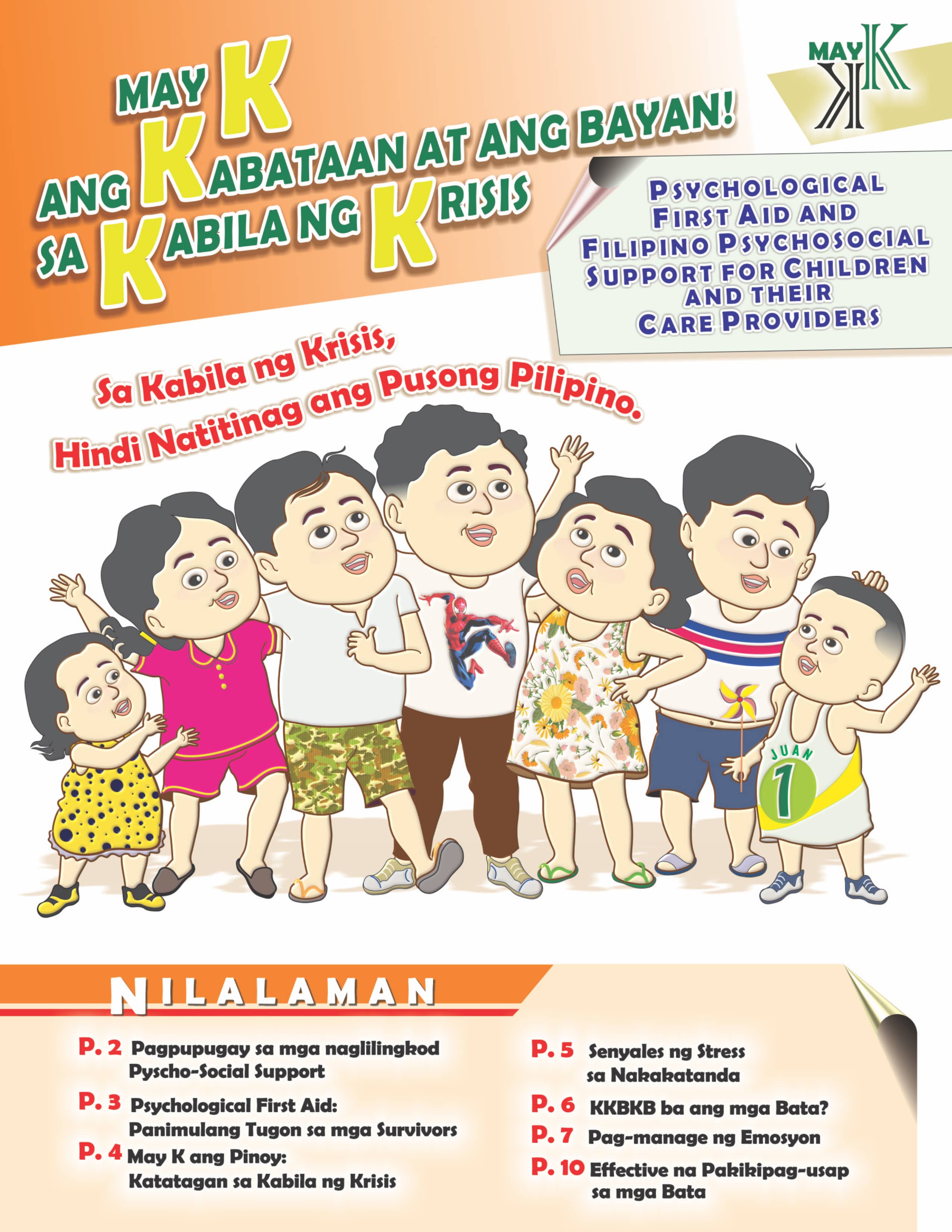Armed Conflict experience and displacement brings about "collective suffering." As such, it affects not only individuals and families but entire peoples and communities as well. When traumatic events such as organized violence strikes, it does not only bring fear, anxiety, and loss to survivors; it also brings damage to livelihood and environment of affected populations.
Moreover, it tears away at socio-cultural institutions and threatens the community "protective factor" anchored on group solidarity and collective security. The crack in protective factor may trigger mistrust, social tension and discord which, if left uncheck, may ultimately lead to community distress.
In this context, the psychosocial impact of armed conflict and displacement should be considered beyond the issue of individual mental health alone. As a traumatic event weighs down on the psychosocial well-being of groups, peoples and communities, its impact should be also understood in the context of its social, political, economic and cultural dimensions and indicators.
In their attempt to provide a model for community-level post-conflict interventions, Ager and Strang (2001) offered that the intensity of a traumatic event depends on the degree of the damage done on the community resources which they categorized into three components.
-
Human capacity – events can lead to a loss of "human capacity" within the community. This domain is taken to constitute such resources such as the health and well-being (mentally, emotionally, physically) of community members; the skills and knowledge of people, their household, livelihoods, etc.
-
Social ecology – Events also frequently lead to a disruption of the "social ecology" of a community, involving social relations within families, peer group, religious and cultural institutions, links with civic and political authorities, etc.
-
Culture and values – Events may also disrupt the "culture and values" of a community leading to a sense of violation of human rights and undermining cultural values, belief, practices and self-determination.
The domains of community resources are interrelated and interconnected. Hence, any impact on the economic and social resources, for instance, would subsequently take its toll on the relationships and well-being of community members, and vice versa. For instance, the burning of crops and destruction of farms due to air strikes may be seen not only as an attack on physical resources, but on the symbol and way of life that gives meaning to the lives of affected population. For indigenous peoples, the destruction of land, plants and animals is a desecration of the spiritual domain that is connected to their humanity. The destruction of lands and religious shrines and places of worships may leave a gaping wound in the "collective consciousness" of an affected community. The inability of civilians to go on with their productive existence and practice their rituals and customs due to military offensives may also bring about certain feelings of resentment, rancor and hostility. This may be aggravated if the fighting and displacement has caused deaths or separation among families and groups.
Repeated occurrences of such traumatic events are often cited to underscore the severity of a crisis. Yet, each community may respond differently to events that may look the same. A life-threatening event, like armed hostility, may stretch to the limit the resiliency and coping capabilities of one community, while a similar event may strengthen the resolve to jointly surmount the crisis in another. Some mental health practioners have noted that it is the intensity of an event per se that determines the psychosocial impact on a community. How the affected population face up to their ordeal, based on the level of their coping resources and capacities, is what spells the degree of their distress. Hence, communities which have learned how to manage disasters and those which have a wide support network may stand a better chance of hurdling their difficulties than those who are ill-prepared and more vulnerable.
"Psychologization of Community in Distress"
In many instances, the use of psychological tools in evaluating the impact of disaster in a community has led to the "clinical" interpretation of the survivors' responses to traumatic events. The reference to and reliance on psychiatric diagnostic checklists has tend to contribute to the promotion of the framework of "psychologization" of a community in distress. It has risked the de-emphasizing of materials and social factors that contribute to the community suffering. Subsequently, this has encouraged the emphasis on the "curative" intervention among individuals and families, rather than an integrated psychosocial response among groups and communities.
But experience accumulated by BALAY through years of working among IDPs has shown that affected population may demonstrate adjustment difficulties at the time of their forced exodus that does not necessarily indicate trauma or other "mental illness." However, this does not ignore the fact that there are individuals that may be afflicted by post traumatic stress disorder (PTSD) or other related psychological or behavioral condition as a result of their exposure to a traumatic incident. In these cases, psychological processing intervention and other therapeutic activities using the Family Systems Approach (FSA) may be introduced for affected individuals or groups.
In many other situations, most of the IDPs who survive harrowing experiences may demonstrate intense anger, grief, mourning, anxiety or hostility due to the damage done to their domain and their separation from their community resources. This may require not only psychological intervention, but also programs that tend to restore and develop the "protective factors" that provide them a collective meaning in their existence and a sense of social security and cultural dignity. In this context, the psychosocial development response should be at the population level, wherein community participation or social mobilization is considered as a method, a process and, or even an indicator of the level of psychosocial well-being among stakeholders.






















